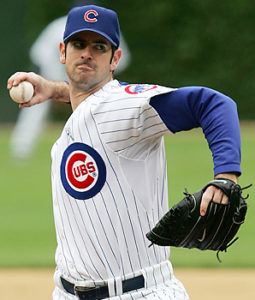A young, top prospect pitcher gets drafted by a team who has a history of losing and that is desperately in need of a savior to be the ace at the top of their rotation for years to come. The prospect has an electric arm and seems virtually un-hittable in the Minor Leagues. Then he gets to the Majors and is mowing down batters left and right. He is on top of the world, the team thinks that they have an ace for the next decade or more, and the city is buzzing.
Then one pitch goes terribly wrong and he tears a ligament in his arm and is on the shelf for more than a year. Where have we heard this story before? It seems that this has been a theme the past couple of years in the MLB.

We can go all the way back to the Chicago Cubs when they had a couple of young aces at the top of their staff in Kerry Wood and Mark Prior. Both were said to have stellar mechanics and electric arms.
We can go back to one of the top pitching prospects we have ever seen in Stephen Strasburg who was lighting up the Majors before he was required to have Tommy John surgery, which those are the most dreaded words that a pitcher ever wants to hear.
Then even this season. National League All-Star starting pitcher Matt Harvey felt tightness in his forearm and thought that it was just something minor. Harvey tore his UCL, which is most likely going to result in Tommy John surgery as well. Harvey was having an excellent season and was in contention with Clayton Kershaw for the National League Cy Young award.
The question is, how does management and the coaching staff handle brining a young pitcher up the correct way to avoid a scenario such as these?
Many people can say that they should simply limit the amount of pitches that the pitcher throws per game, and limit the overall innings he pitches per season. But this is hard to do especially if your team is in contention down the stretch such as the Nationals were last season when they shut Strasburg down.
Curt Schilling is now an analyst at ESPN and he had an interesting opinion on this. He stated the obvious: that throwing a baseball is simply not a natural movement, and injuries are going to happen either way. But then he said that throwing a slider is an even more violent motion, and that teams should limit the amount of sliders a young pitcher throws throughout his first few seasons in the Majors.
This is a brilliant idea and teams should start watching how many sliders their young pitchers throw from the point when they draft them.
All of the pitchers that were just named have one thing in common amongst others. They relied on their sliders heavily to get batters out late in the count. Pitchers do this because it comes off their hand looking as if it is a fast ball, then it completely fools the hitter. It is a highly effective pitch, but it has proved to be very costly to young arms.
So, teams should have the pitcher learn to be able to locate their fastballs first and move in a solid change-up as well. A change-up can be as effective as a slider if the pitcher works on it because once again, it will fool the batter late in the count. On top of this, the pitchers can utilize a curveball as well which is less stressful on the arm than a slider.
Those are all solid pitches that a young arm can be successful with in the MLB without having to go to the slider. Then after a few years, the pitcher can develop a slider once his arm has matured.
Listen, injuries are going to always happen in sports, especially to pitchers in baseball. But this is a way that teams can keep their pitchers on the field without having to shut them down prematurely. Teams might be sacrificing a pitch that is considered the hardest to hit amongst many in the game, but they would rather sacrifice that than the ace of their staff for the future.




